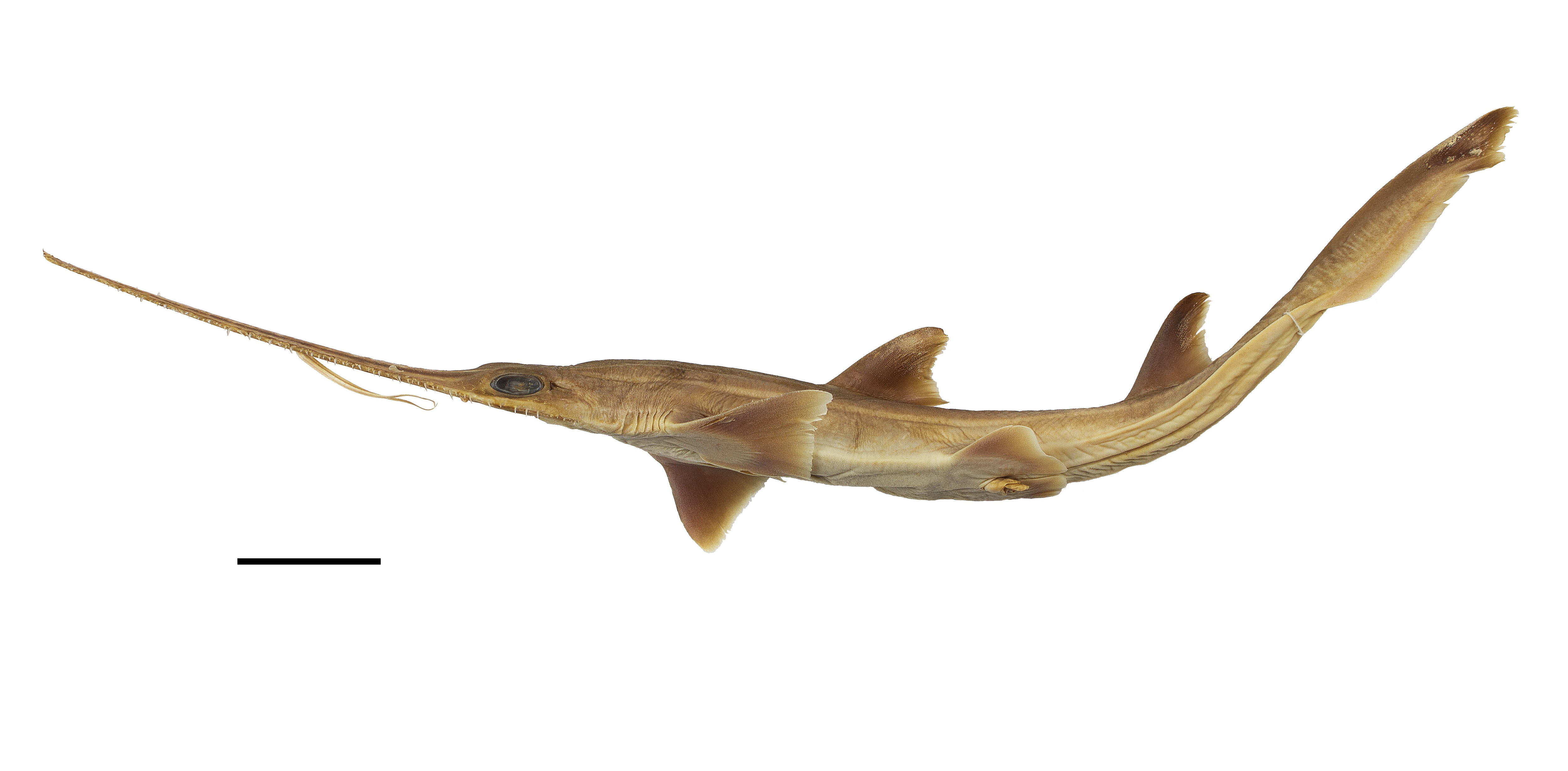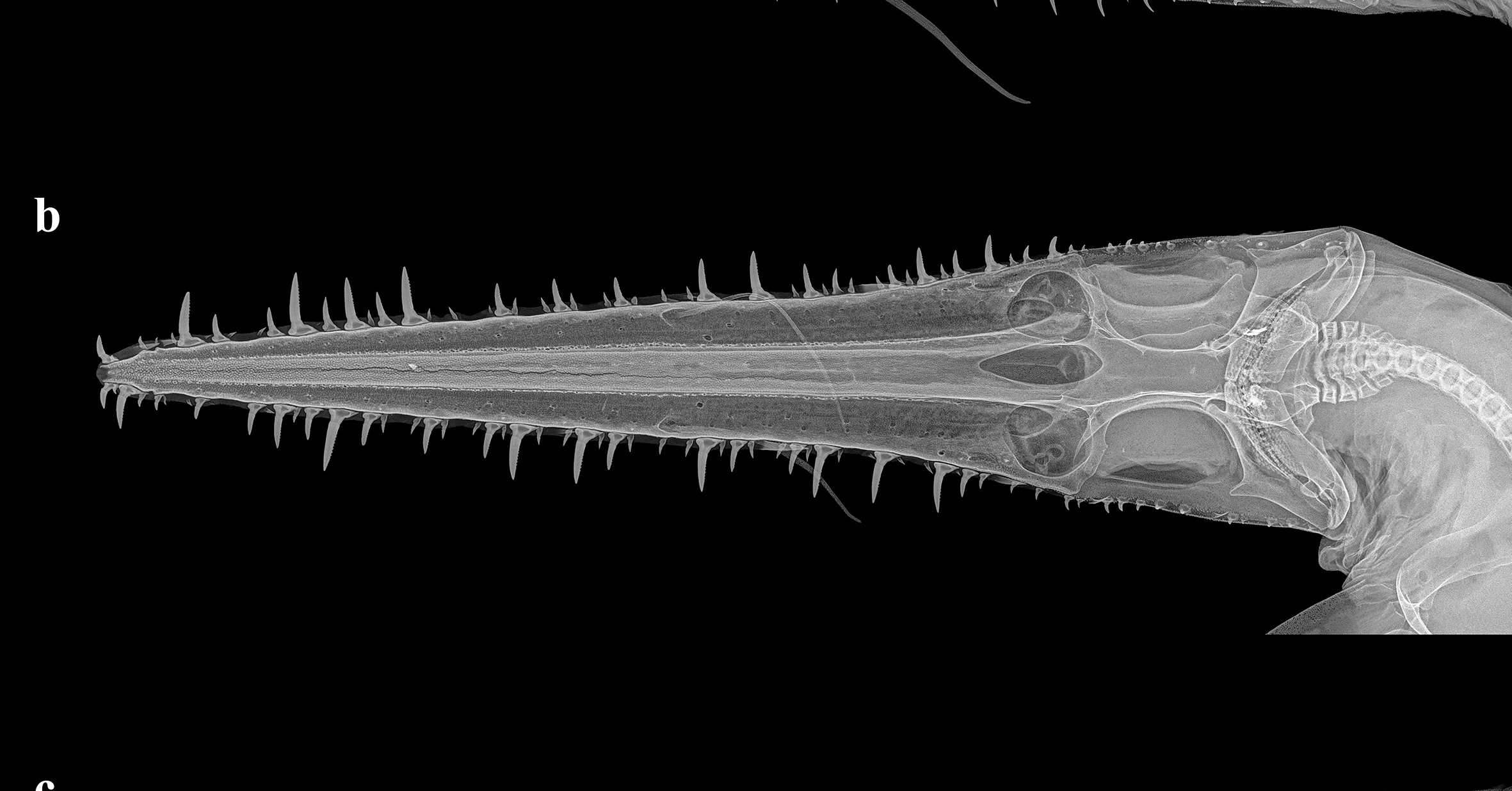Fox News Flash top headlines for March 19
Fox News Flash top headlines are here. Check out what's clicking on Foxnews.com.
An international team of marine scientists has discovered two new species of six-gilled sharks in the Indian Ocean.
The Pliotrema kajae (kaja’s six-gilled sawshark) and Pliotrema annae (anna’s six-gilled sawshark) were found off the coasts of Zanzibar and Madagascar. The discovery is particularly notable given that six-gilled sawsharks are rarely seen, according to experts.
The finds were made during an investigation into small-scale fisheries. A paper on the research has been published in the journal Plos One.
WALKING SHARKS FOUND NEAR AUSTRALIA
"Last year our team highlighted the massive underreporting of sharks and rays caught in the South West Indian Ocean and the urgent need to expand efforts globally to assess the impact of these fisheries on vulnerable species,” said Dr. Andrew Temple of Newcastle University in the U.K., who co-authored the paper, in a statement. “The discovery re-enforces both how important the western Indian Ocean is in terms of shark and ray biodiversity, but also how much we still don’t know.”

Pliotrema kajae. (Weigmann et al, Plos One, Newcastle University)
“The six-gill sawsharks are really quite extraordinary as most sawsharks have five gill slits per side,” added Dr. Simon Weigmann of the Elasmobranch Research Laboratory in Hamburg, who was the paper’s lead author, in the statement. “So it was really exciting to find a new six-gill sawshark species and to find two new species - well that was simply astonishing!”
Weigmann noted that knowledge of sawsharks in the western Indian Ocean is generally still scarce. "But considering their known depth distributions, both new species are likely affected by fishing operations,” he said. “This assumption, combined with the limited range and apparent rarity of both new species, raises concerns that they are vulnerable to overfishing and might be in continuing decline.”
NEWLY DISCOVERED SHARK SPECIES SQUIRTS GLOWING CLOUDS FROM POCKETS
“This could be particularly alarming for Anna’s six-gill sawshark due to its very small known range, rarity and occurrence in shallow waters as the species is only known from depths of 20 to 35 m [65.6 to 115 feet].”

Radiograph of one of the new shark species. (Weigmann et al, Plos One, Newcastle University)
Researchers note that sawsharks can reach about 4.9 feet in length. They have long snouts edged with sharp teeth that alternate in size.
There is a number of different species of sawshark, with the six-gill shawshark (Pliotrema warreni) listed as near-threatened by the International Union of Conservation of Nature and Natural Resources’ (IUCN) Red List.
NEW SPECIES OF SHARK DISCOVERED HAS ANCESTORS OLDER THAN DINOSAURS
The position of the barbels (whiskerlike sensory organs) is different in the new shark species compared to Pliotrema warreni. “In P. kajae and P. annae, these are situated approximately half way from the tip of the saw - the rostral tip - to the mouth, compared to P. warreni, where they are about two thirds of the way down, much closer to the mouth,” the researchers said, in a statement.
Other new shark species have been garnering attention recently. A new species of walking shark, for example, was recently discovered near Northern Australia and New Guinea.
CLICK HERE TO GET THE FOX NEWS APP
Last year scientists said that that a tiny shark found in the Gulf of Mexico that squirts “little glowing clouds” into the ocean is a new species.
Fox News’ Chris Ciaccia and David Aaro contributed to this article. Follow James Rogers on Twitter @jamesjrogers
